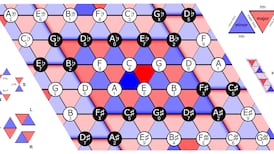Researchers at the National Botanic Gardens are looking into the genetic fingerprints of plants to protect threatened Irish species
COMPOST? YES. Gardening tools? Yes. Equipment and consumables for extracting and analysing DNA? Well, as it happens, yes.
The shopping list at the National Botanic Gardens has expanded in recent months, thanks to its new genetics lab, which aims to provide better information on conservation strategies for our native flora.
By combing through genetic sequences from Ireland’s rare plants, conservation biologists there hope to tailor plans to protect key species under threat, says Dr Peter Wyse Jackson, director of the gardens at Glasnevin, Dublin.
“We realised the plant conservation work that we were doing needed to have a molecular basis to it,” he says.
“There have been cases of people ensuring that they conserve the last 15 individuals of a species, and then found with molecular work that the individuals are all clones, identical. If you don’t have the genetic basis, you are essentially judging the book by its cover, so the DNA technology is as important for us as buying in composts and tools.”
The beauty of genetic analysis today is that individual plants need not die in the process of yielding their DNA, says conservation biologist Dr Noeleen Smyth, who is working on several projects with the gardens. “You just need a tiny little piece of the plant material; you can tell so much from that,” she adds.
That genetic read-out can provide clues about about a plant’s legacy that are not otherwise apparent, according to Smyth. “If you are looking at a plant for a short period of time, you don’t know how long it lives or who it crosses with. Whereas, when you get the DNA, you have a lot of that information in a jar from a tiny little sample.”
A high level of genetic variation is a good sign, as it can offer more reserve against threats such as disease, says Smyth.
“We want to see if they still have lots of diversity or if they are so inbred they are down to their last legs,” she says. “Also, how distinct this rare species is compared to the one down the road. You can see evolution in progress because it will show up in the genes before it shows up morphologically.”
Smyth is currently looking at the genetics of threatened species in Ireland, including the tiny liverwort Petalophyllum ralfsii. Of the 29 known populations here, only one is on the east coast and it's not huge.
“On Bull Island there are only eight plants left, that’s all we found in a good year. People have found only one or two in other years, so this is pretty serious,” says Smyth.
She and PhD student Christina Campbell are now genetically analysing Petalophyllumsamples from Bull Island and from populations stretching between Kerry and Donegal to better understand conservation needs.
“The thinking is that the Bull Island population may be very different from the populations in the west, so we might need to put in more measures to try and protect it,” she says.
Smyth is also looking to DNA to shed light on a conundrum about another rarity, the Killarney fern. Out of 66 total populations, only 19 present the recognisable sporophyte or frond stage, while most remain as gametophytes, she says.
“Around Ireland we have lots of gametophtyes that are not turning into the sporophytes and we don’t know why they have stopped.”
As well as trying to artificially encourage male and female plants to reproduce in the lab, the researchers are analysing populations where the sporophytes and gametophytes co-exist, says Smyth. “With a bit of genetics, we can find out have they both been sitting there and not doing anything for ages or is it a functioning population.”
Getting such hard data on populations makes a lot of sense when there are finite resources for conservation, notes Smyth, who works in conjunction with Trinity College Dublin and the National Parks and Wildlife Service.











